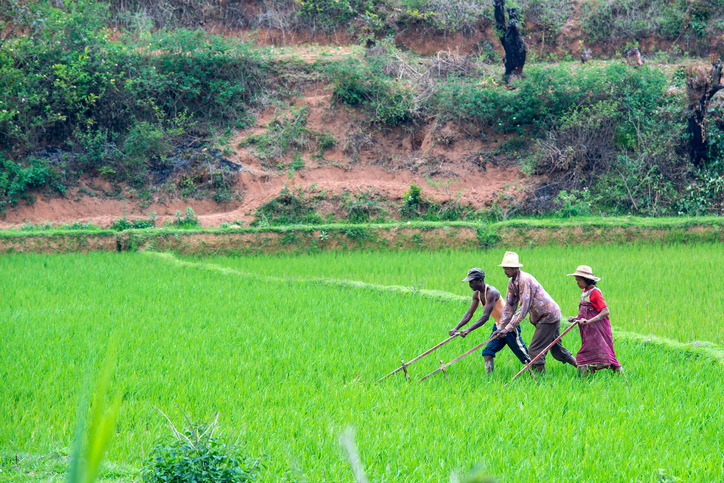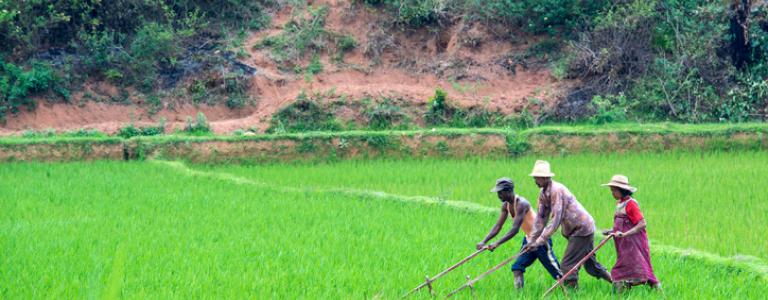Disaggregated Data is Essential to Leave No One Behind
If we are to truly achieve the SDGs—and be sure to"leave no one behind"—we need the kind of complete picture that only disaggregated data can provide.
The 2030 Agenda for Sustainable Development elevates as a core principle the objective to “leave no one behind.”
Through this Agenda and its Sustainable Development Goals (SDGs), the world has committed for the first time to end poverty in all its forms everywhere (SDG 1), eradicate hunger (SDG 2) and ensure healthy lives and well-being for all (SDG 3).
To know if we are achieving this core principle in the midst of progress on these critical goals, we will need to track implementation using specific indicators. Most SDG assessments to date have used national-level data to evaluate SDG progress at the country level. However, if we are to achieve the 2030 Agenda objectives on basic human well-being, we will need to know if the situation of the most vulnerable is improving, especially in terms of poverty reduction and achieving food security.

Leaving no one behind will require the use of disaggregated data, to allow an in-depth look at trends across different population groups. This disaggregation, for example, could include breaking data down by gender and age. We know that women tend to earn less, the elderly are often more impoverished, and certain regions and locations such as rural areas can be more vulnerable to hunger than urban areas. Data based on national averages would miss all of these opportunities to identify specific challenges that must be addressed if we are to fully implement the 2030 Agenda.
Disaggregated data will provide a good basis from which to understand progress towards these critical goals, but first countries must collect and disaggregate the data.
The set of indicators that was approved by the UN Economic and Social Council to track SDG implementation recognizes the need to disaggregate data by social status, gender, age and location. For SDG 1, for example, data disaggregation by location (urban-rural), age, gender, employment and disability (Table 1) is required. The major requirements for data disaggregation focus on gender and age differences in relation to poverty reduction, food security and good health.
Table 1. Summary of major disaggregation required across indicators for SDG 1 (no poverty), SDG 2 (zero hunger) and SDG 3 (good health and well-being). Developed by authors based on the revised list of global Sustainable Development Goal indicators.

Disaggregated data will provide a good basis from which to understand progress towards these critical goals, but first countries must collect and disaggregate the data. Our research indicates that countries will need to increase their focus on disaggregated data if they are to know whether the vulnerable are being left behind.
We reviewed the voluntary national reports that 32 countries submitted to the United Nations High-level Political Forum on Sustainable Development (HLPF) in 2016 and 2017. From the analyzed countries, 69 per cent provide national-level data with no disaggregation. Fewer than 1 in 5 countries (18%) disaggregated data for one out of the three analyzed SDGs and only 13 per cent provided disaggregated data for more than two of the analyzed SDGs.
Countries should direct their attention to data disaggregation now in order to establish proper baselines, develop and implement targeted policies to address the well-being of the most vulnerable, and monitor progress on “leaving no one behind.”
Of the first three SDGs 1, 2 and 3, the most common types of disaggregation are gender and age, and mostly for indicators for SDG 3 on good health and well-being. Developing countries used disaggregation by urban and rural data, even for additional indicators beyond those required by the official indicators.
If the analyzed reports are representative of all countries, our analysis indicates that most countries are failing to adequately track progress towards addressing basic human needs such as poverty reduction and food security among vulnerable populations. Currently, it seems that neither developed nor developing countries are in a position to comprehensively capture progress in achieving these first three SDGs.
Countries should direct their attention to data disaggregation now in order to establish proper baselines, develop and implement targeted policies to address the well-being of the most vulnerable, and monitor progress on “leaving no one behind.” Meetings like last week’s 2017 International Conference on SDG Statistics and additional efforts to build statistical capacity and enhance learning between countries are needed to address the gaps in collection of disaggregated data as soon as possible.
You might also be interested in
Toward a Coherent, Transformative Approach to Financing Sustainable Development, Climate, and Nature
Four key proposals for the Fourth Financing for Development Conference (FfD4) to create an integrated, equitable approach to financing climate, nature, and development goals.
Green Public Procurement in India
This report analyzes the status of green public procurement (GPP) in India and suggests key strategies for advancing sustainable procurement practices.
Budgeting for Net Zero
This study estimates the cost gap for battery energy storage systems (BESSs), offshore wind, solar photovoltaic (PV), electric vehicles (EVs), and green hydrogen (GH2) to inform government support.
Plastics Treaty Must Remain Ambitious — We Can’t Give Up Now
The last round of the plastics treaty negotiations in Busan, South Korea, did not result in a deal, but the momentum is palpable. We must seize this opportunity and keep working toward an ambitious treaty that addresses the entire plastics life cycle.
